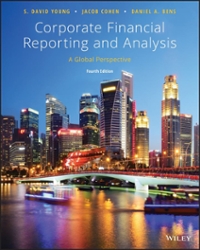Answered step by step
Verified Expert Solution
Question
1 Approved Answer
Review Chapter 13 Application Questions # 1 - 4. Complete questions 1 - 4, attach an Excel spreadsheet for calculations. 1. Nicole, age 25, is
Review Chapter 13 Application Questions # 1 - 4. Complete questions 1 - 4, attach an Excel spreadsheet for calculations. 1. Nicole, age 25, is considering the purchase of a $20,000 participating ordinary life insurance policy. The annual premium is $248.60. Projected dividends over the first 20 years are $814. The cash value at the end of 20 years is $4314. If the premiums are invested at 5 percent interest, they will accumulate to $8631 at the end of 20 years. If the dividends are invested at 5 percent interest, they will accumulate to $1163 at the end of 20 years. A $1 deposit at the beginning of each year at 5 percent interest will accumulate to $34.719 at the end of 20 years. a.Based on the traditional net cost method, calculate the cost per $1000 per year. b.Based on the surrender cost index, calculate the cost per $1000 per year. c.Based on the net payment cost index, calculate the cost per $1000 per year. 2. Todd, age 40, is considering the purchase of a $100,000 participating ordinary life insurance policy. The annual premium is $2280. Projected dividends over the first 20 years are $15,624.The cash value at the end of 20 years is $35,260. If the premiums are invested at 5 percent interest, they will grow to $79,159 at the end of 20 years. If the dividends are invested at 5 percent interest, they will accumulate to $24,400 at the end of 20 years. A $1 deposit at the beginning of each year at 5 percent interest will accumulate to $34.719 at the end of 20 years. a.Based on the traditional net cost method, calculate the cost per $1000 per year. b.Based on the surrender cost index, calculate the cost per $1000 per year. c.Based on the net payment cost index, calculate the cost per $1000 per year. 3. John, age 52, is overweight, smokes, and had a mild heart attack five years ago. Ignoring the advice of his physician, he refuses to exercise, lose weight, and quit smoking. John owns a $25,000 participating ordinary life policy that he purchased 20 years ago. A life insurance agent approached John and proposed that he replace the older policy with a new life insurance policy. The agent claims the new policy is superior to the older policy that was purchased years ago. Despite John's health problems, the agent claims that John can get life insurance from his company. What factors should John consider before replacing the older policy with a new policy? 4.Allison is trying to complete her income-tax return. A number of questions have come up about life insurance. Explain the tax treatment of each of the following. a.Allison is the beneficiary named in her grandfather's life insurance policy. Her grandfather died this year and Allison received a lump-sum payment of $50,000. She wonders if she has to report the $50,000 as taxable income. b.Allison purchased a $100,000 cash value life insurance policy on her own life six years ago. This year, the cash value increased by $380. Allison wonders if the cash-value increase must be reported as taxable income. The policy remains in force. c.Allison's annual life insurance premium is $350. Allison itemizes her income-tax deductions. She wonders if her life insurance premium is a tax- deductible expense. d.Allison's ordinary life insurance policy is a participating policy. This year she received $120 in policyowner dividends. She wonders if she is required to report the $120 as taxable income
Step by Step Solution
There are 3 Steps involved in it
Step: 1

Get Instant Access to Expert-Tailored Solutions
See step-by-step solutions with expert insights and AI powered tools for academic success
Step: 2

Step: 3

Ace Your Homework with AI
Get the answers you need in no time with our AI-driven, step-by-step assistance
Get Started


